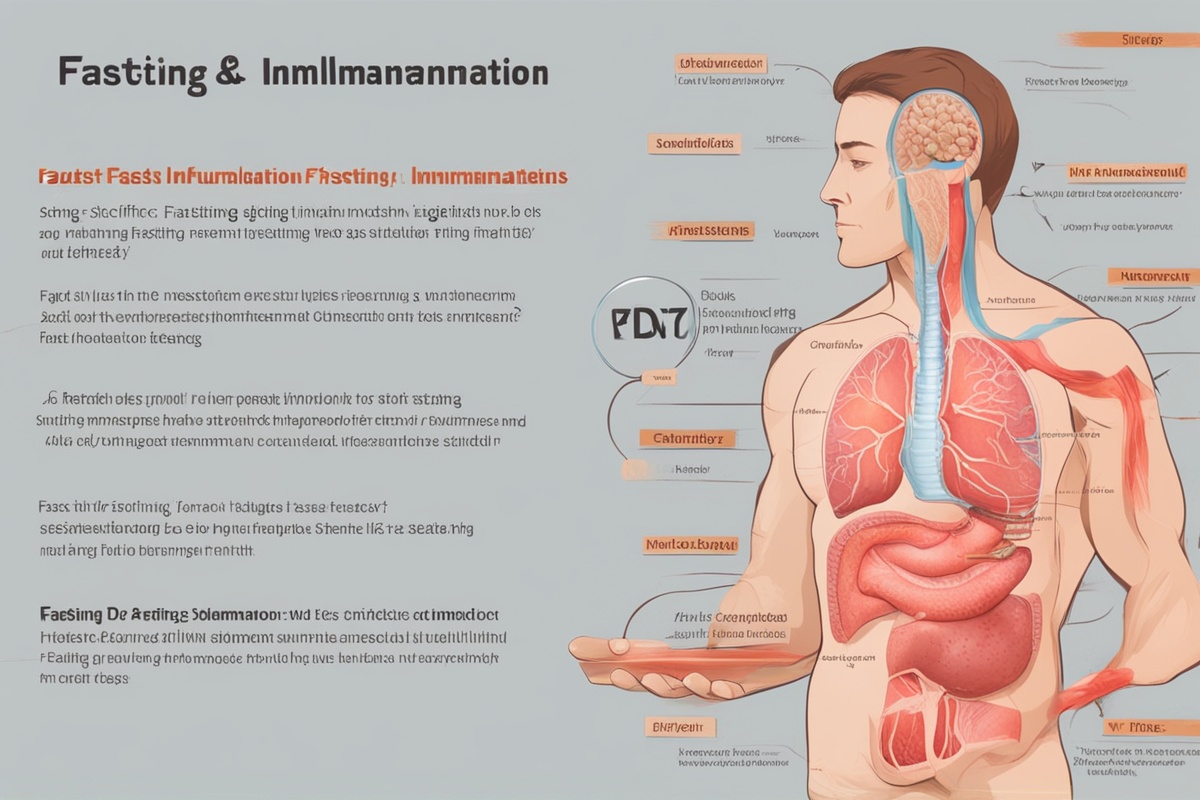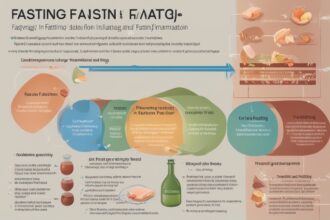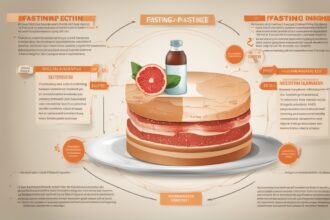Periodic fasting has gained significant attention in recent years as a potential strategy for improving overall health, and one of its most promising benefits is its ability to combat inflammation. Inflammation, while a natural response to injury or infection, can become chronic and contribute to various health issues such as arthritis, heart disease, and even autoimmune disorders. This article delves into the concept of reducing swelling through periodic fasting, exploring how this practice can help mitigate inflammation and promote better health.
What Is Periodic Fasting?
Periodic fasting, often referred to as intermittent fasting, involves alternating cycles of eating and fasting over a specific period. Common methods include the 16/8 approach (fasting for 16 hours and eating within an 8-hour window) or the 5:2 method (eating normally for five days and restricting calorie intake on two non-consecutive days). Unlike traditional diets that focus on what you eat, periodic fasting emphasizes when you eat, allowing the body to enter a state of rest and repair during fasting periods. This process is believed to play a critical role in reducing swelling and inflammation by giving the body a break from constant digestion and metabolic stress.
How Inflammation Affects the Body
Inflammation is the body’s natural defense mechanism against harmful stimuli like pathogens or injuries. Acute inflammation is a short-term response that helps heal wounds or fight infections. However, chronic inflammation occurs when this response persists, often due to poor diet, stress, or lack of physical activity. Chronic inflammation can manifest as swelling, pain, and redness, and over time, it may contribute to serious conditions like diabetes, cardiovascular disease, and cancer. By adopting practices like periodic fasting, individuals may be able to address chronic inflammation and reduce swelling effectively. For more on the basics of inflammation, check out our guide to understanding inflammation.
The Science Behind Reducing Swelling Through Periodic Fasting
Research suggests that periodic fasting can influence inflammation at a cellular level. During fasting, the body shifts from using glucose as its primary energy source to burning stored fats through a process called ketosis. This metabolic switch has been shown to lower levels of pro-inflammatory cytokines, which are proteins that trigger inflammation in the body. Additionally, fasting promotes autophagy, a cellular cleanup process that removes damaged cells and reduces oxidative stress—a key driver of inflammation. Studies have indicated that reducing swelling through periodic fasting may be particularly beneficial for conditions like rheumatoid arthritis and inflammatory bowel disease. To learn more about autophagy, read our detailed post on autophagy and its health benefits.
Benefits of Periodic Fasting for Inflammation and Swelling
Beyond its impact on cellular processes, periodic fasting offers several tangible benefits for managing inflammation and swelling. First, it helps regulate blood sugar levels, which can prevent spikes that often exacerbate inflammatory responses. Second, fasting may reduce visceral fat, a type of fat linked to higher inflammation markers. Lastly, fasting can improve gut health by promoting a balanced microbiome, which plays a crucial role in immune regulation and inflammation control. For individuals struggling with joint pain or puffiness, reducing swelling through periodic fasting could provide a natural and sustainable solution. Curious about gut health? Explore our article on gut health and inflammation.
How to Start Periodic Fasting Safely
If you’re new to fasting, it’s essential to start slowly and consult with a healthcare professional, especially if you have underlying health conditions. Begin with a simple 12/12 schedule—fasting for 12 hours overnight and eating during a 12-hour window. Gradually progress to more intensive methods like the 16/8 approach as your body adapts. Stay hydrated during fasting periods, and focus on nutrient-dense foods during eating windows to support your body’s anti-inflammatory efforts. Avoid overeating or consuming processed foods, as they can counteract the benefits of reducing swelling through periodic fasting. For additional tips, see our beginner’s guide to intermittent fasting.
Potential Risks and Considerations
While periodic fasting can be a powerful tool for reducing inflammation, it’s not suitable for everyone. Pregnant or breastfeeding individuals, those with eating disorders, or people with certain medical conditions like diabetes should avoid fasting unless under medical supervision. Over-fasting or inadequate nutrition during eating periods can also lead to fatigue, irritability, or nutrient deficiencies, which might worsen inflammation rather than alleviate it. Always prioritize balance and listen to your body when exploring reducing swelling through periodic fasting. For more on managing fasting risks, check out our post on fasting safety tips.
Disclaimer: The information provided in this article is for educational purposes only and should not be considered medical advice. Periodic fasting may not be suitable for everyone, and results can vary based on individual health conditions. Always consult with a healthcare professional or nutritionist before starting any fasting regimen or making significant changes to your diet or lifestyle, especially if you have pre-existing medical conditions or are on medication.
References
- de Cabo, R., & Mattson, M. P. (2019). Effects of Intermittent Fasting on Health, Aging, and Disease. New England Journal of Medicine.
- Harvard Health Publishing. (2020). Understanding Acute and Chronic Inflammation.
- Longo, V. D., & Mattson, M. P. (2014). Fasting: Molecular Mechanisms and Clinical Applications. Nature Medicine.
- Mayo Clinic. (2022). Inflammation: Symptoms & Causes.
- Patterson, R. E., & Sears, D. D. (2017). Metabolic Effects of Intermittent Fasting. Journal of Clinical Investigation.
This content is for informational purposes only and not a substitute for professional advice.






